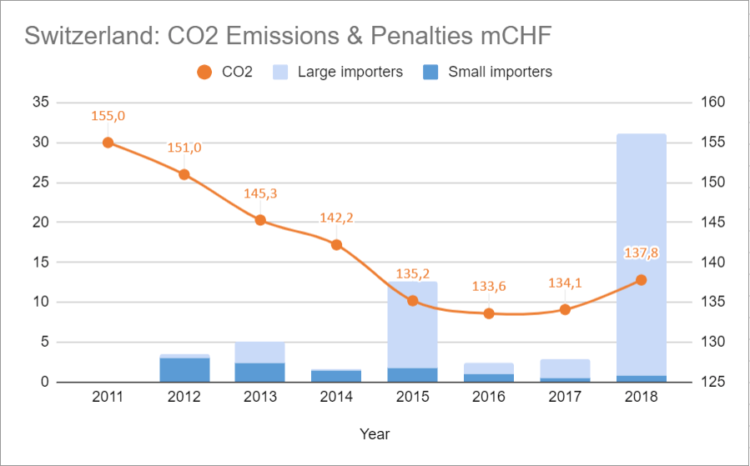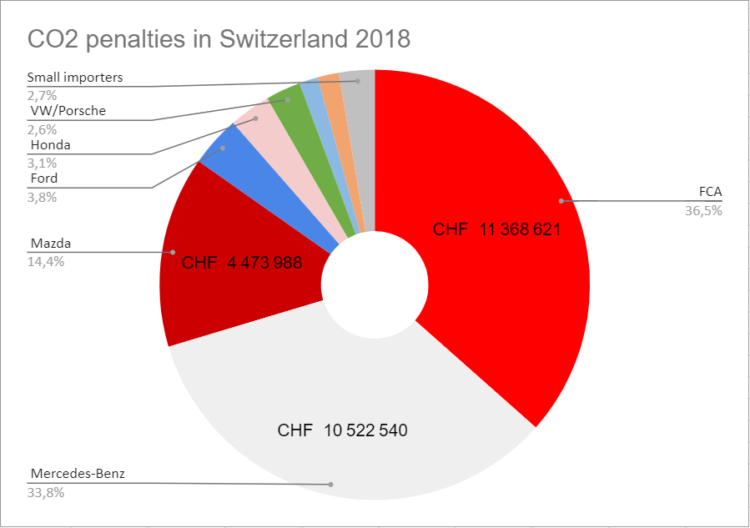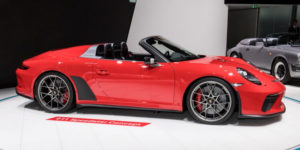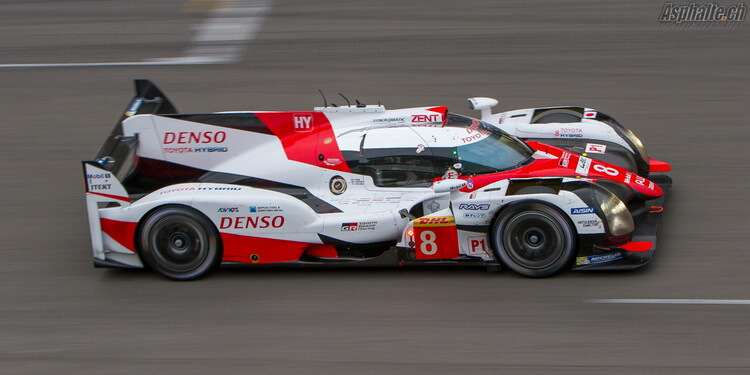CO2 penalties: a cliff in 2020 ?
A honeymoon then the first warning shots
Initially, the deployment of CO2 targets appeared completely innocuous and mostly a tax deftly implemented by the automotive lobby in the swiss Parliament to curb direct imports. The strength of the swiss franc following the abandonment of the exchange rate floor policy by the swiss national bank. From 2012 to 2014, small importers pay 6.8m CHF of cumulated sanctions, large importers half that amount.
In 2015, the first warning shots are fired. Large importers pay 10.8 million francs in penalties. In 2016 and 2017, sanctions return to very low levels while the trend in CO2 emissions inverts itself. In 2018, CO2 penalties jump to 31.1m CHF.
Let us remind here that any company importing more than 50 cars per year qualifies as a large importer. In 2018, there were 77 such large importers, while only 25 can be considered as official. The largest parallel importers move nearly 2000 cars per year, but parallel imports represent only 4% of the swiss passenger car market.
Fiat Chrysler (Alfa Romeo, Fiat, Jeep), Mercedes-Benz (& Smart) and Mazda pay the highest fines by far. To put these amounts in context, FCA or Maserati paid CHF 743 per imported vehiclefor 9.7g/km of excess above their respective targets, Mercedes CHF 494.5 for 7.3g/km of excess.
Where do these increases come from ? SUVs are often blamed, probably rightly so. The downward trend in displacement resulting from downsizing has plateaued since 2019 around 1800 cm3, nearly the highest in Europe. The weight of newly registered vehicles has increased by 12.6% from 2013 to 2018.









